Problem Description
Peripherally inserted central catheter (PICC) is placed peripherally yet is considered central catheter as it is connected to the central circulation.
Possible Complications:
- Infections;
- Air embolus;
- Dislodgement of catheter;
- Catheter occlusion.
A peripherally inserted central catheter (PICC) is placed peripherally yet is considered central catheter as it is connected to the central circulation. As a rule, they are utilized to conduct infusion therapy. It should also be noted that the PICC-catheters lack most of the disadvantages inherent in port and external system central venous catheters. Nevertheless, there is a risk of bloodstream infection, air embolus, dislodgement of the catheter, and catheter occlusion.
Core causes of complications
Reinsertions are repeated insertions of a catheter occurred as a result of the catheter migration.
Thrombosis is a process of in vivo of blood clots in the formation e lumen of blood vessels or chambers of the heart.
Reinsertions and thrombosis are the core causes of complications associated with PICC. Thrombosis is a process of in vivo of blood clots in the formation e lumen of blood vessels or chambers of the heart. Reinsertions are repeated insertions of a catheter occurred as a result of the catheter migration. Therefore early identification of thrombosis as well as reinsertions prevention would reduce the risk.

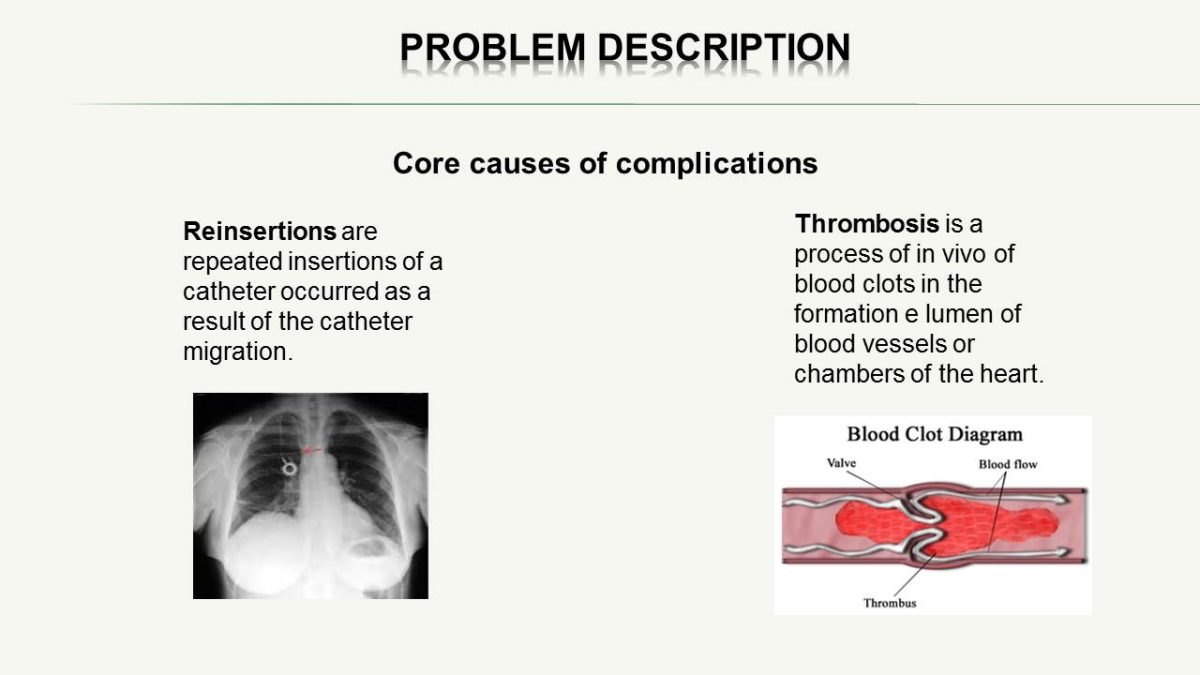
Proposed change and change theory
Quality Improvement Initiative Theory
- Education of care providers and patients about the signs and symptoms of complications;
- Selection of safe practices;
- Utilization of the least invasive device;
- Technology application: antimicrobial and antithrombotic catheters.
From the above observations, it becomes clear that the issue needs to be improved to achieve better outcomes in patients. It seems appropriate to apply Quality Improvement Initiative due to its comprehensive nature. It would allow reducing reinsertions and identifying thrombosis cases in a timely manner. First, education of care providers and patients about the signs and symptoms of complications should be conducted. At that, both physicians and nurses need to be educated focusing on complication prevention strategies. This change would lead to the decreased mortality rates. Second, it is of great importance to promoting safe practices in the patients’ treatment (Kornbau, Lee, Hughes, & Firstenberg, 2015). The use of sterile barriers, hand hygiene, selection of the appropriate place of insertion, and daily catheter assessment would contribute to the quality of the PICC utilization. Third, the use of the least invasive device is essential to avoid insertion traumas. Finally, the implementation of technology would benefit the current situation. In particular, antimicrobial and antithrombotic catheters might significantly reduce infection development.
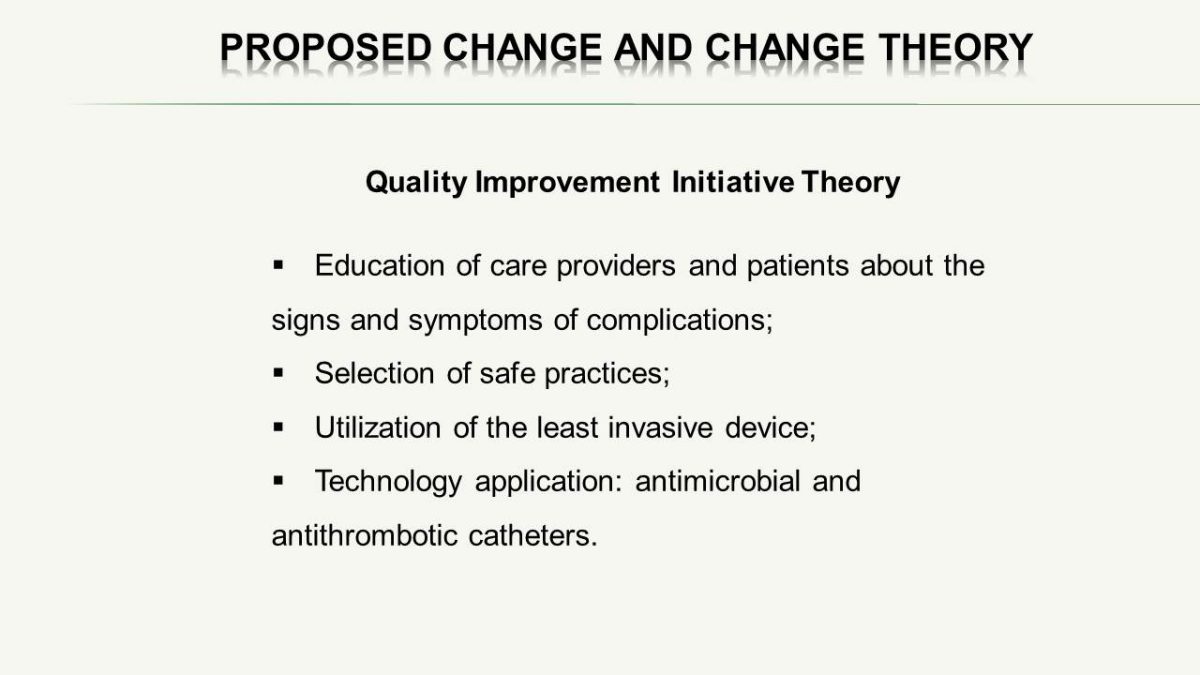
Lewin’s model of change management
The model includes three stages
- Unfreezing involves understanding the situation as well as definition and description of the driving forces of the desired change (Shirey, 2013).
- Changing marks a transition from one state of the organization to another: participation and involvement of staff and support for employees.
- Refreezing is a stabilization of the organization and strengthening a new state.
In order to provide evidence-based changes, it seems necessary to consider the following strategies in detail: Lewin’s model of change management, the 7-S model developed by McKinsey, and the 8-Step theory developed by Kottler. Let us begin with Lewins’ model that is the basis for the majority management approaches and is a classical view of the organizational changes included in the educational seminars on change management. The model includes three stages: unfreezing, changing, and refreezing. Stage 1 involves understanding the situation as well as definition and description of the driving forces of the desired change. At this stage, one might note the redefinition of the organization’s views and business processes and even the abandonment of some of them (Shirey, 2013). As an effective tool for refreezing the Force Field Analysis might be used.
Stage 2 marks a transition from one state of the organization to another. Lewin compared this step with the movement, a journey that takes place to overcome the problems. This stage involves the participation and involvement of staff in the organization’s issues (Shirey, 2013). In its turn, the organization needs to support employees’ belief in success and a clear picture of the image of the desired future.
Stage 3 is a stabilization of the organization and strengthening a new state. Very often after a while after the end of the project the organization renounces its results, it stops using the introduction.
Advantages
- visual summary of all the various factors;
- force field analysis expands the evaluation;
- suitable for both short-term and long-term changes;
- relevant for radical changes.
Disadvantages
- lack of considering human feelings;
- requires the full participation of every member of a team;
- complicity of reaching consensus among the group.
Among the advantages of this model, one might note visual summary of all the various factors and expanded evaluation due to force field analysis. In addition, it is suitable for both short-term and long-term changes and radical changes. The disadvantages of the strategy consist of the lack of considering human feelings, requires the full participation of every member of a team, and the complicity of reaching consensus among the group.

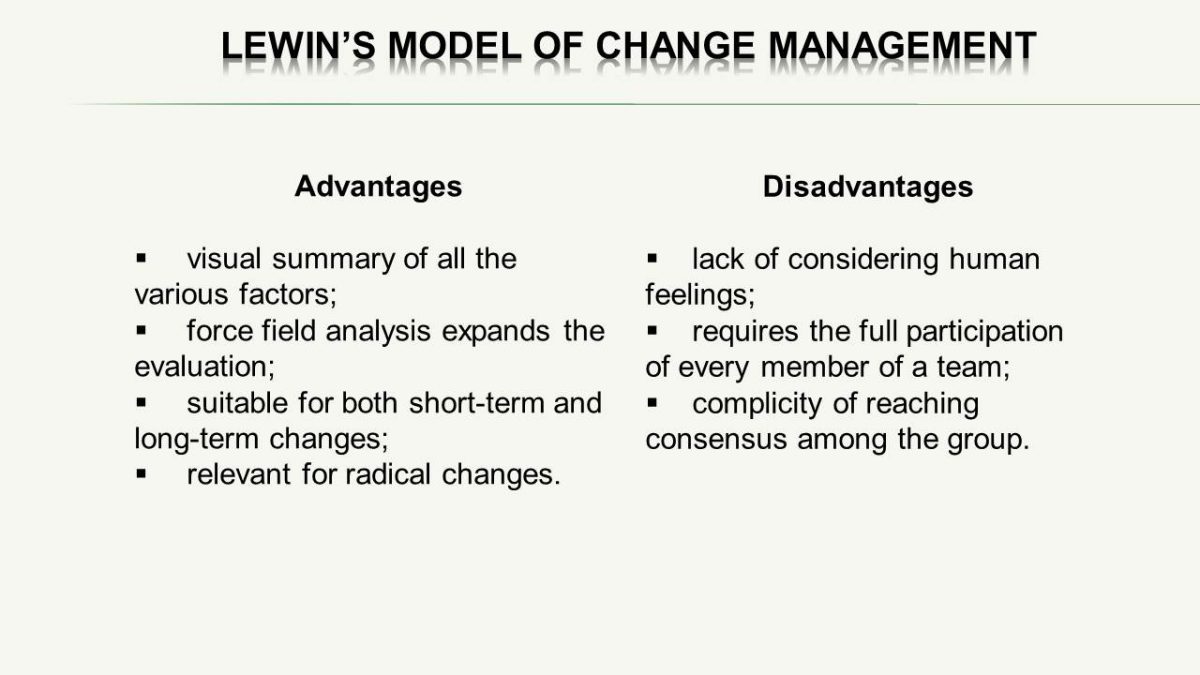
7-S model developed by McKinsey
This concept is used as a measure of the quality of the performance in an organization (Singh, 2013).
Hard Factors
- Strategy: the plan aimed at maintaining successful change;
- Structure: the way the organization is structured;
- Systems: the daily activities and procedures that staff members engage in to get the job done.
Soft Factors
- Shared Values: the core values of the organization that are evidenced in the corporate culture and the general work ethics.
- Style: the style of leadership adopted by the organization.
- Staff: the employees and their general capabilities.
- Skills: the actual skills and competencies of the employees working for the company.
This concept is used as a measure of the quality of the performance in an organization. The seven factors are so interrelated that changing any of them may affect changes in other six factors. These are the three ‘hard’ factors: strategy, structure, and system; and the four “soft” factors: style, shared values, skills, and staff (Singh, 2013). Let us consider each of the components specifically:
- Strategy: the plan aimed at maintaining successful change;
- Structure: the way the organization is structured;
- Systems: activities and procedures that compose the work.
- Shared Values: the core values of the organization that is evidenced in the corporate culture and the general work ethics.
- Style: the style of leadership applied to the organization.
- Staff: staff and their general capabilities.
- Skills: skills and competencies of the personnel working for the company.
Advantages
- good framework to ask the right questions;
- management can directly influence the implementation of change;
- aligning processes and departments;
- examines potential changes in the future.
Disadvantages
- influenced by culture;
- might be difficult to describe;
- no external environment is taken into account.
“Hard” elements are easier to identify, and the organization can directly affect them by strategy statements, organizational peculiarities and reporting lines, and formal processes. On the contrary, “soft” components can be more difficult to illustrate, they are less tangible, and more impacted by culture. Nevertheless, these soft elements are as significant as the hard ones for the organization that strives to be successful. McKinsey’s strategy also tends to align processes and departments and examine potential changes in the future. Disadvantages include the fact that the strategy is influenced by culture, might be difficult to describe, and no external environment is taken into account.
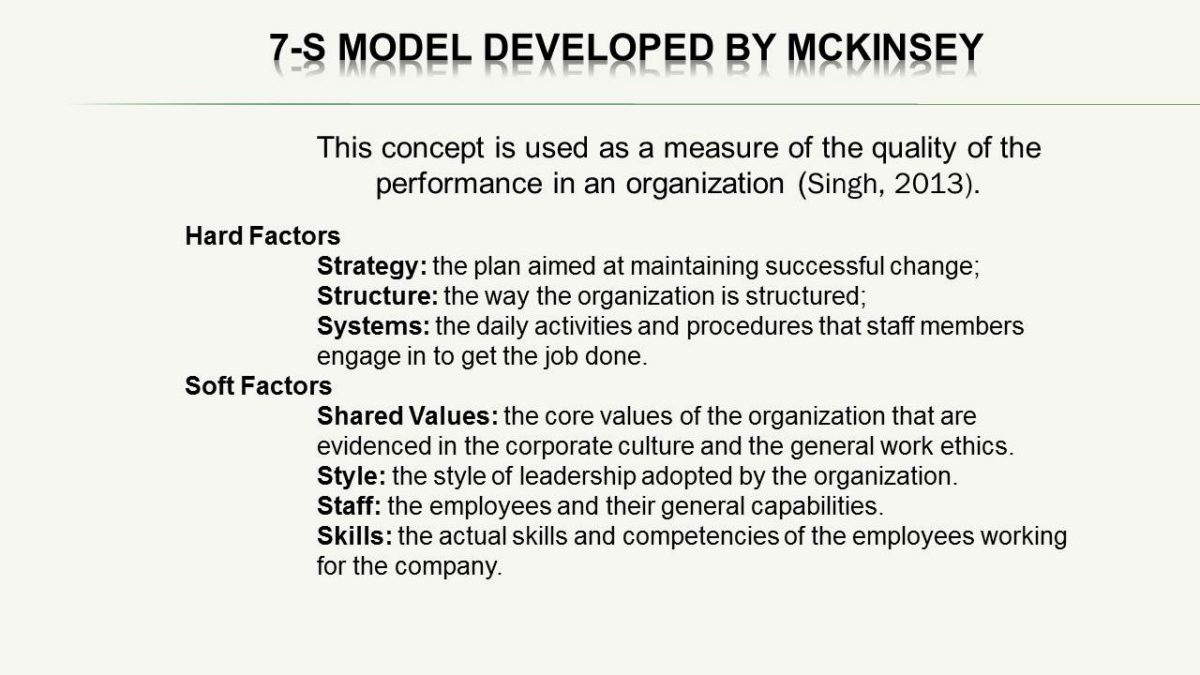
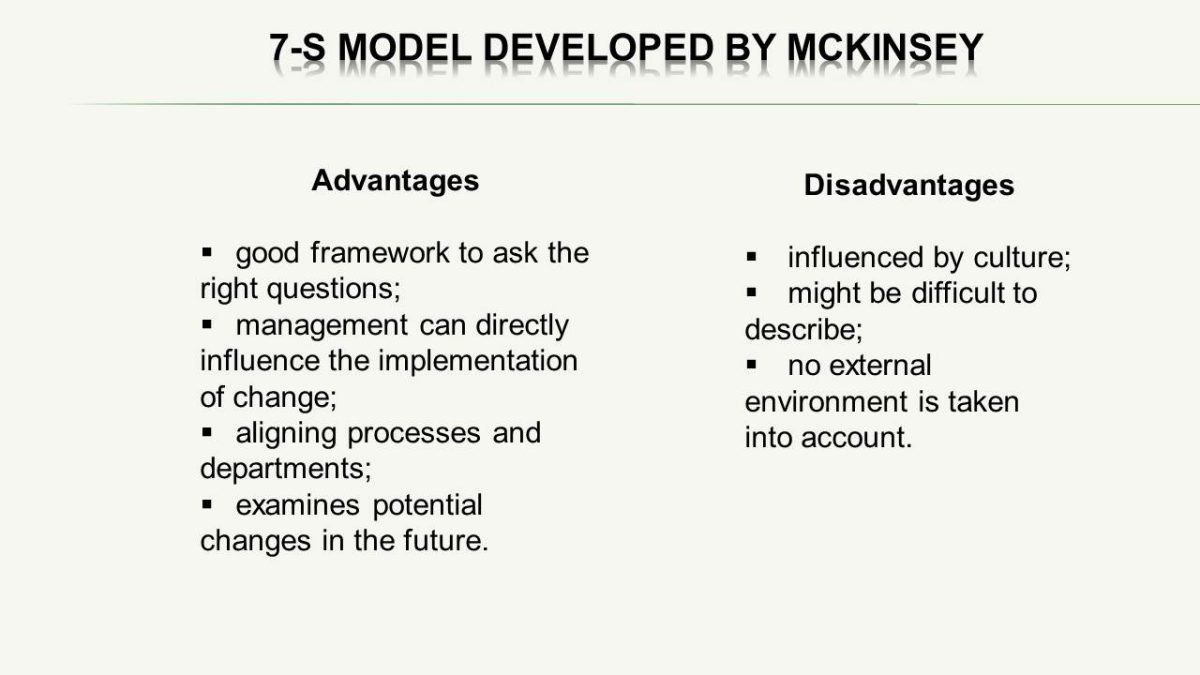
8-S theory developed by KotTer
Kotter’s approach is based on the idea that the change of attitude is the most effective way to organizational changes (Auguste, 2013).
- Create an atmosphere of urgency;
- Form a powerful team of reformers combining the efforts of influential employees and change agents;
- Create a vision designing an image of a desired outcome;
- Promote a new vision using accessibility of presentation;
- Create the conditions for the implementation of a new vision;
- Plan and achieve immediate results;
- Fix the achievements and expand the transformation;
- Institutionalize new approaches formalizing the rules of behavior.
Kotter’s approach is based on the idea that the change of attitude is the most effective way to organizational changes (Auguste, 2013). Kotter stresses that the process of change takes place in several successive stages. Violation of this order or the rejection of some of them leads to the illusion of rapid change, but cannot lead to the desired outcome. Let us consider each of stages.
- Create an atmosphere of urgency studying the situation, identifying and analyzing actual and potential crises and opportunities.
- Form a powerful team of reformers combining the efforts of influential employees and change agents and encouraging the participants to form work teams.
- Create a vision designing an image of the desired outcome in order to increase the activity of employees.
- Promote a new vision using accessibility of presentation, metaphors, analogies, examples, and models of new behavior.
- Create the conditions for the implementation of a new vision eliminating the obstacles blocking the new behavior and changing the structure and duties, contrary to the new vision. It is also important to encourage creativity and willingness to take reasonable risks.
- Plan and achieve immediate results planning required first steps and promoting early successes.
- Fix the achievements and expand the transformation creating an atmosphere of confidence to new approaches, changing staffing, and spreading successful experience throughout the organization.
- Institutionalize new approaches formalizing the rules of behavior, building relationships between results, creating conditions for the development of quality.
Advantages
- model is an easy tool to identify and implement change;
- core attention is paid to defining and accepting change, not the actual change;
- model facilitates transition process;
- it embraces the whole organization.
Disadvantages
- steps cannot be skipped;
- theory takes great period of time.
Considerable advantages to the model include:
- The model is an easy tool to identify and implement change;
- The core attention is paid to defining and accepting change, not the actual change.
- the model facilitates the transition embraces the whole organization.
There are some disadvantages as well:
- Steps cannot be skipped;
- The takes the great period of time.
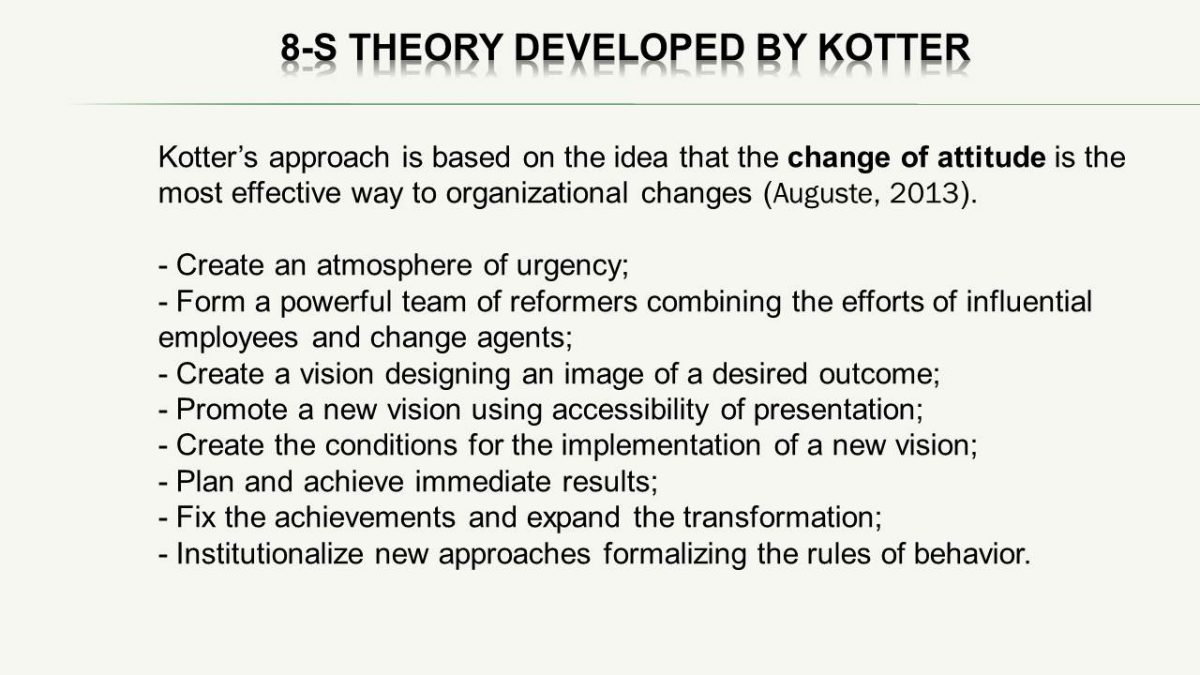
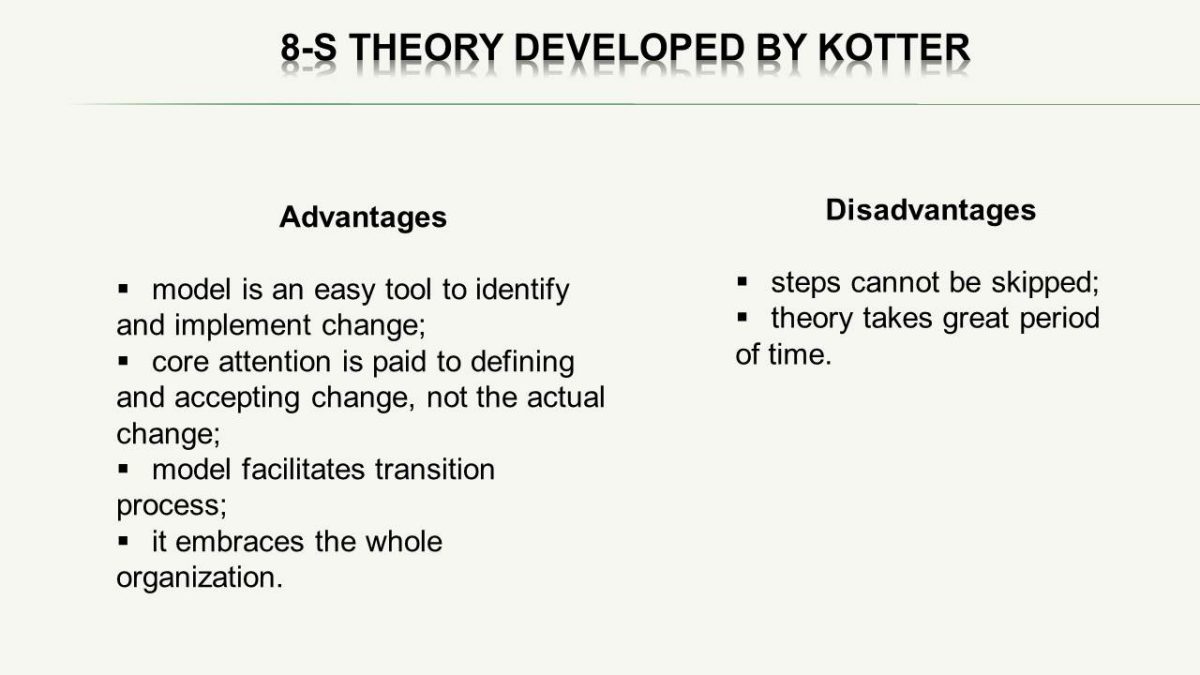
LEAN principles
One of the central provisions of LEAN principles in health care is the concept of value for the patient (Lawal et al., 2014).
One of the central provisions of lean principles in health care is the concept of value for the patient. Value is a utility inherent in the product or service from the patient point of view (Lawal et al., 2014). Requirements of patients differ. However, it is necessary to organize change according to lean principles. Please, consider the presented figure to understand lean principles in detail.
Taking into account the effectiveness of LEAN principles, it seems appropriate to utilize the following principles at Kendall Regional Medical Center:
- Management leadership.
- Involvement of personnel.
- Organizational.
The successful implementation of lean principles in health care organization depends on various factors. Their identification is necessary to enhance the effectiveness of lean projects specifically to prevent the PICC complications. In this regard, it seems appropriate to utilize the following principles at Kendall Regional Medical Center:
- Management leadership. It assumes the creation of supporting initiatives for the implementation of change, allocation of the necessary resources, and engagement.
- Involvement of personnel. All the employees should participate in the improvement projects. Also, the use of team working methods would promote change.
- Organizational culture. This principle presumes the formation of organizational culture, ethics, and comfortable working environment.
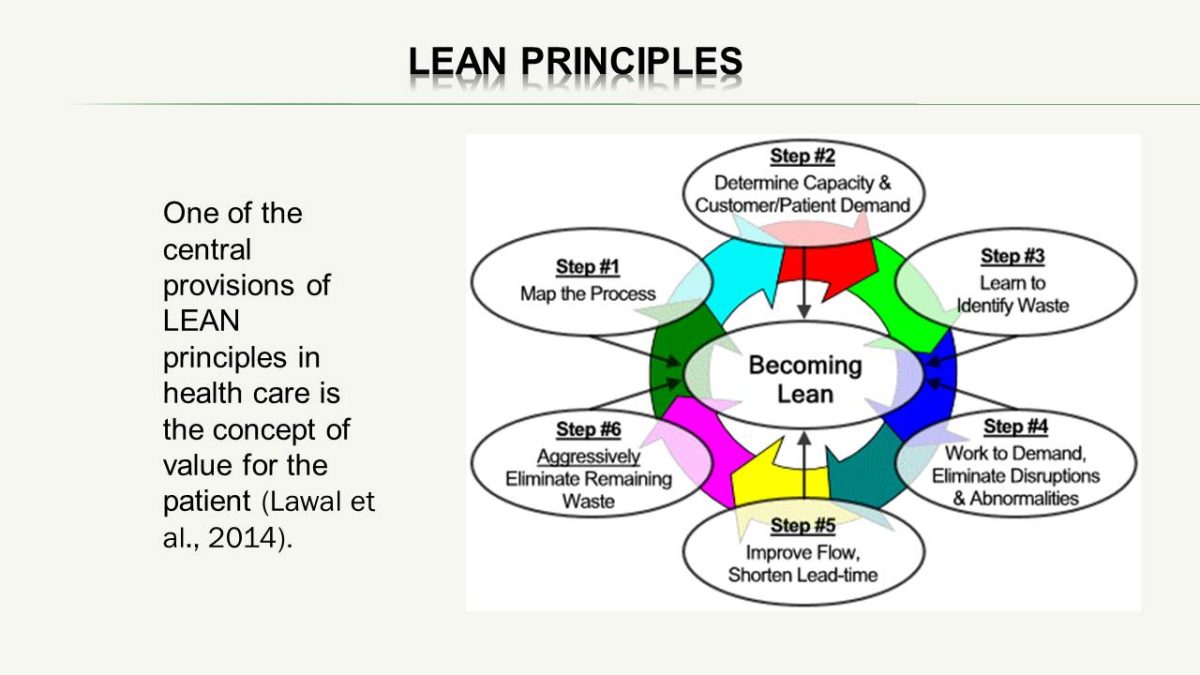
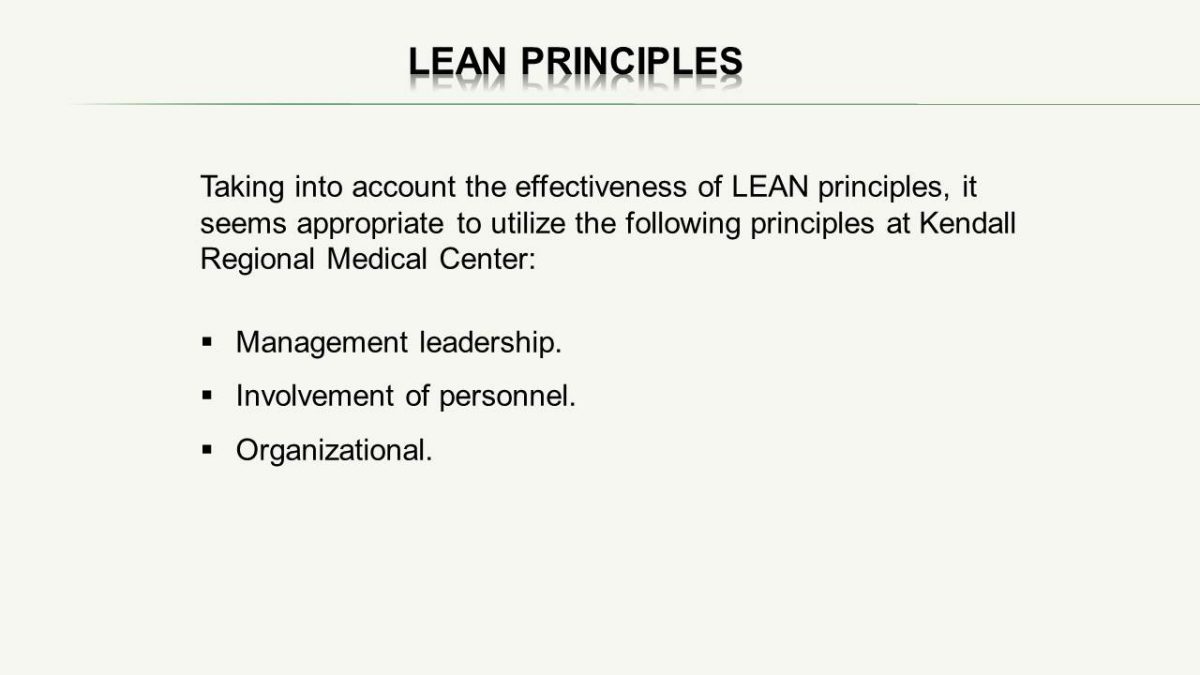
Using teams to promote change
Team work might be referred to as a shared leadership, when every employee contributes to change preparation and implementation.
Empowering staff to initiate decision making creates innovative ideas and job satisfaction (Al-Sawai, 2013).
However, this process requires no excessive workload and staff turnover to become successful.
Team work might be referred to as a shared leadership when every employee contributes to the change organization and implementation. Empowering staff to initiate decision making creates innovative ideas and job satisfaction (Al-Sawai, 2013). However, this process requires no excessive workload and staff turnover to become successful.
In this connection, teams should be used to promote changes that were stated above. In particular, it is useful to organize a number of groups according to employees’ professional characteristics.
For example, one group might consider the issue of technology application while another one might reflect one the least invasive methods of insertion.
After that teams might meet on conference and discuss each of the issues together. Such distribution of items would allow conducting relevant evidence-based investigations to choose the most appropriate solutions.
In this connection, teams should be used to promote changes that were stated above. In particular, it is useful to organize a number of groups according to employees’ professional characteristics. For example, one group might consider the issue of technology application while another one might reflect one the least invasive methods of insertion. After that teams might meet at the conference and discuss each of the issues together. Such distribution of items would allow conducting relevant evidence-based investigations to choose the most appropriate solutions.
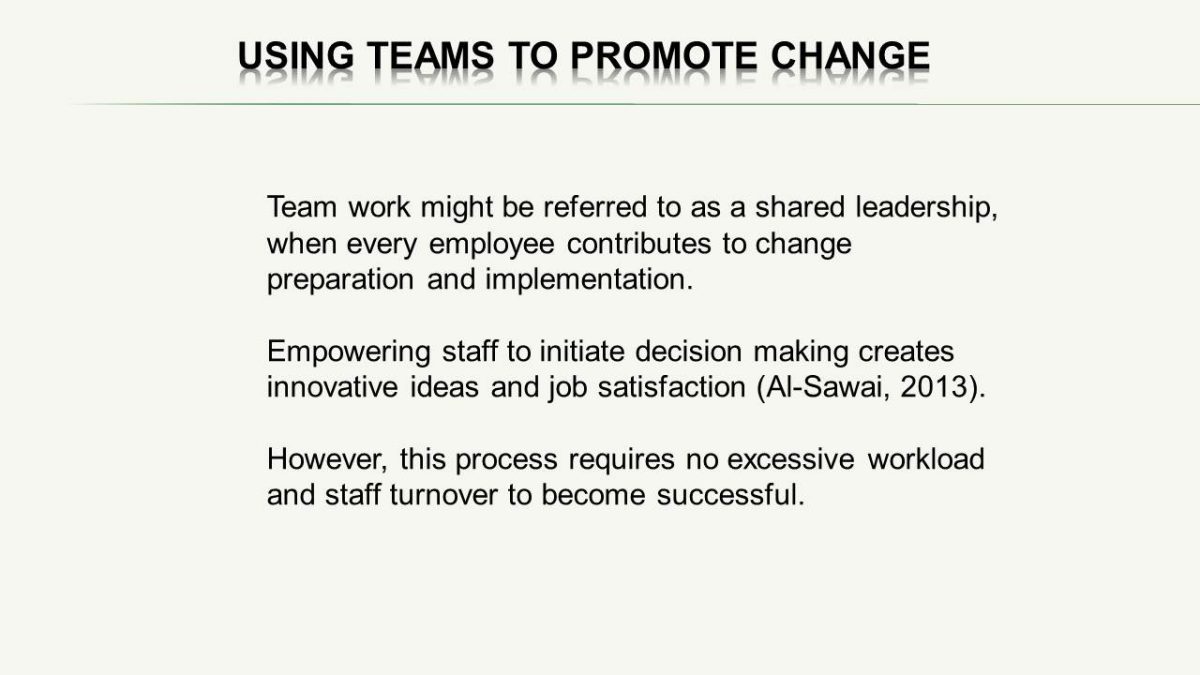
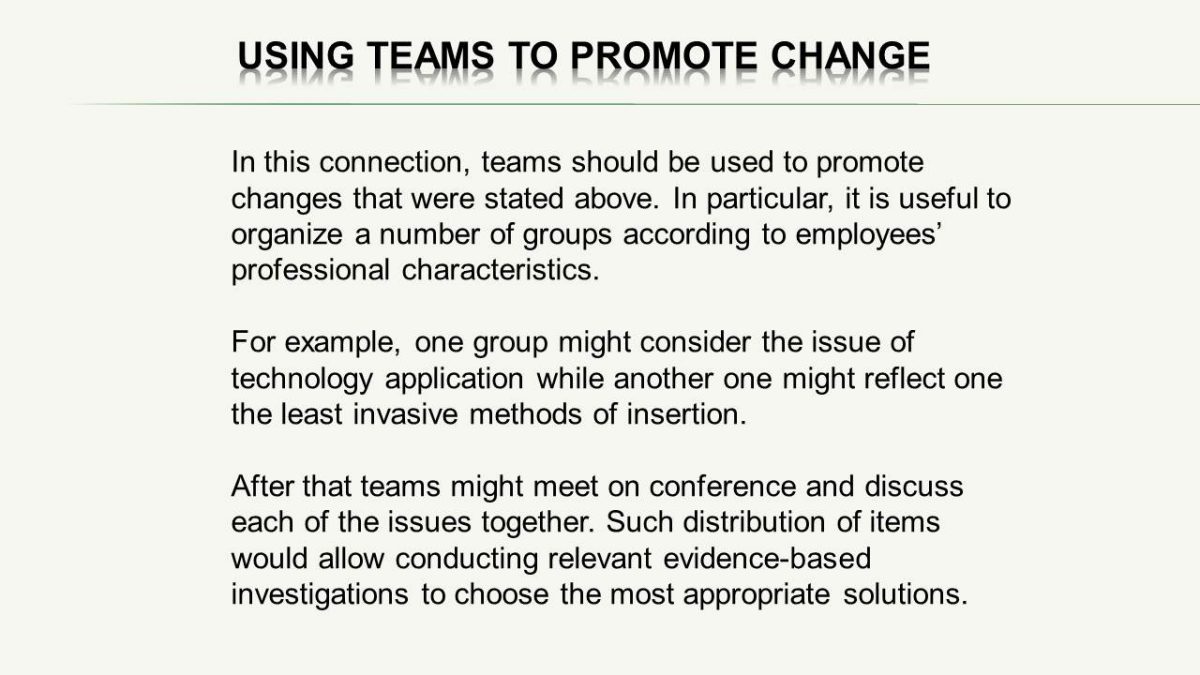
Conclusion
In conclusion, it should be emphasized according to the chosen Quality Improvement Initiative theory, the following changes should be provided: education of staff and patients, safe practices, utilization of the least invasive device, and technology application.
The prevention of the PICC complications including infections, air embolus, and others should be based on team work.
In conclusion, it should be emphasized according to the chosen Quality Improvement Initiative theory, the following changes should be provided: the education of staff and patients, safe practices, utilization of the least invasive device, and technology application. The prevention of the PICC complications including infections, air embolus, and others should be based on team work.
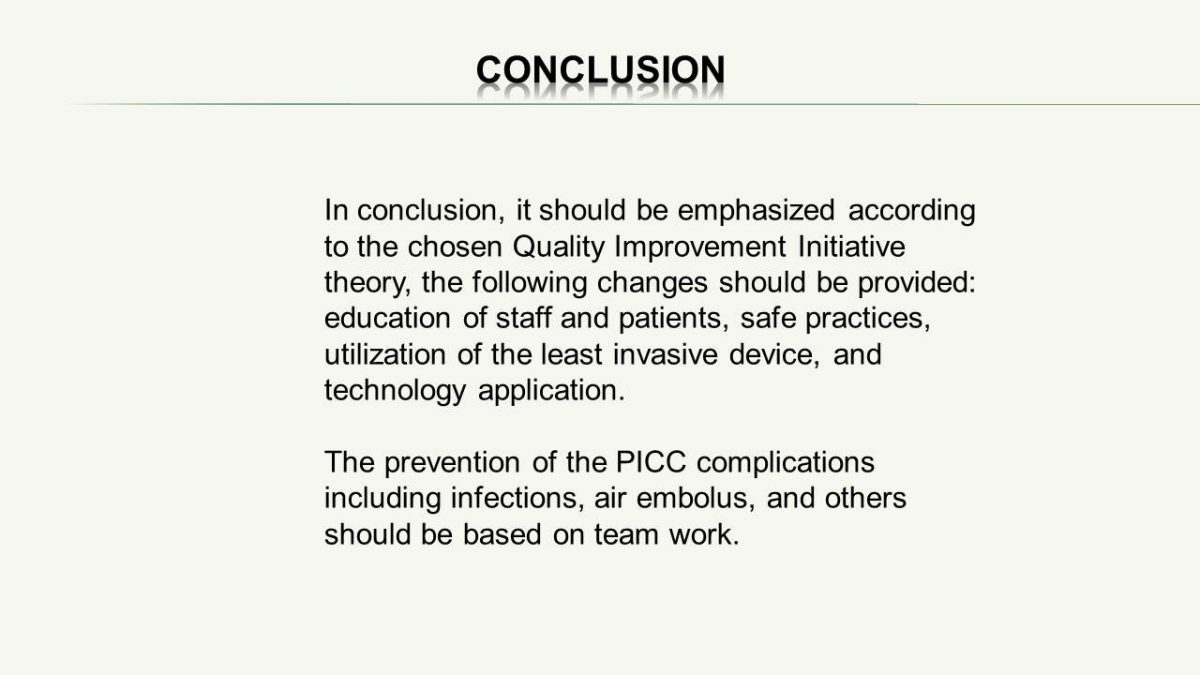
References
Al-Sawai, A. (2013). Leadership of Healthcare Professionals: Where Do We Stand? Oman Medical Journal,28(4), 285-287.
Auguste, J. (2013). Applying Kotters 8-Step Process for Leading Change to the Digital Transformation of an Orthopedic Surgical Practice Group in Toronto, Canada. JournalofHealth & MedicalInformatics,4(3), 1-4.
Kornbau, K., Lee, K. C., Hughes, G. D., & Firstenberg, M. S. (2015). Central line complications. International Journal of Critical Ilness & Injury Science,5(3), 170-178.
Lawal, A. K., Rotter, T., Kinsman, L., Sari, N., Harrison, L., Jeffery, C., Flynn, R. (2014). Lean management in health care: Definition, concepts, methodology and effects reported (systematic review protocol). SystematicReviews,3(1), 1-6.
Shirey, M. R. (2013). Lewin’s Theory of Planned Change as a Strategic Resource. The Journal of Nursing Administration,43(2), 69-72.
Singh, A. (2013). A Study of Role of McKinsey’s 7S Framework in Achieving Organizational Excellence. Organization Development Journal,31(3), 39-48.